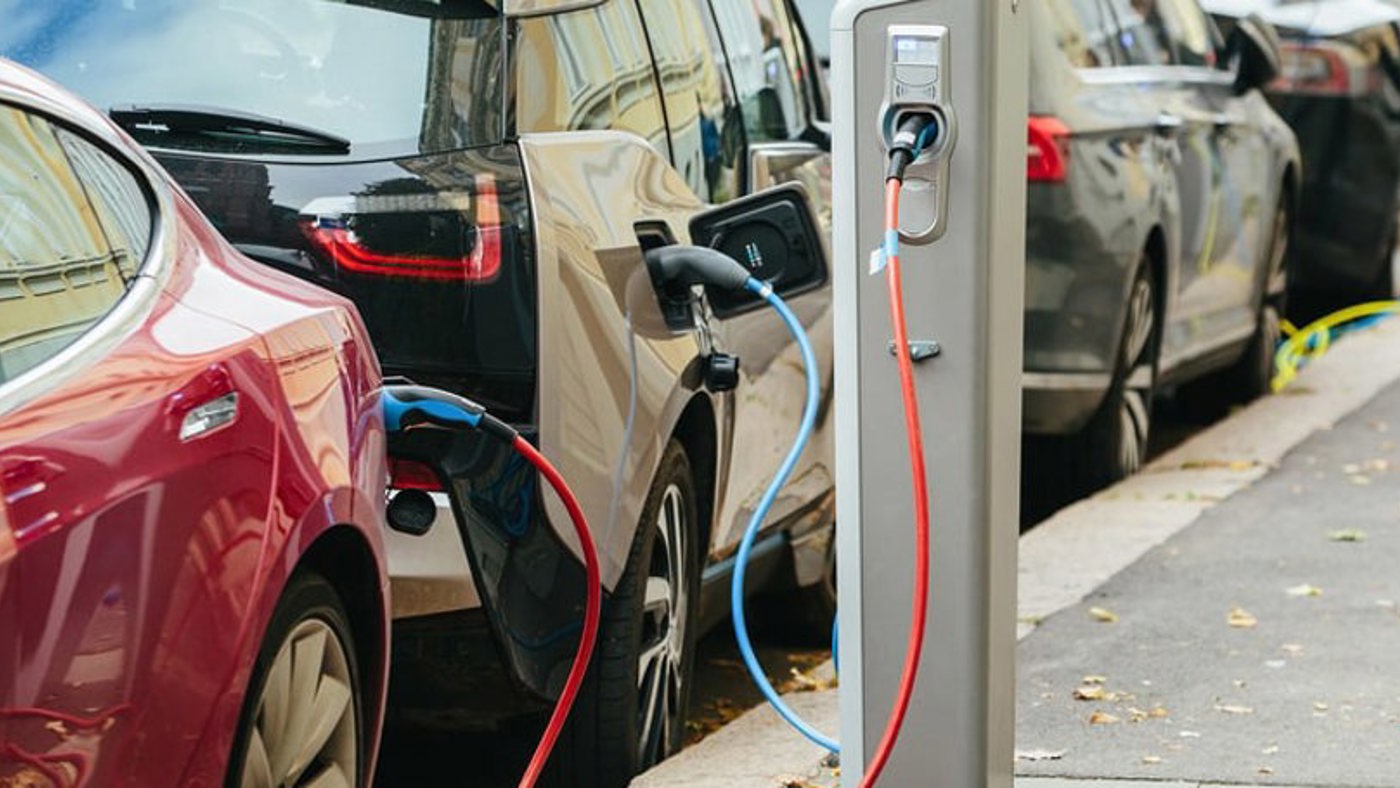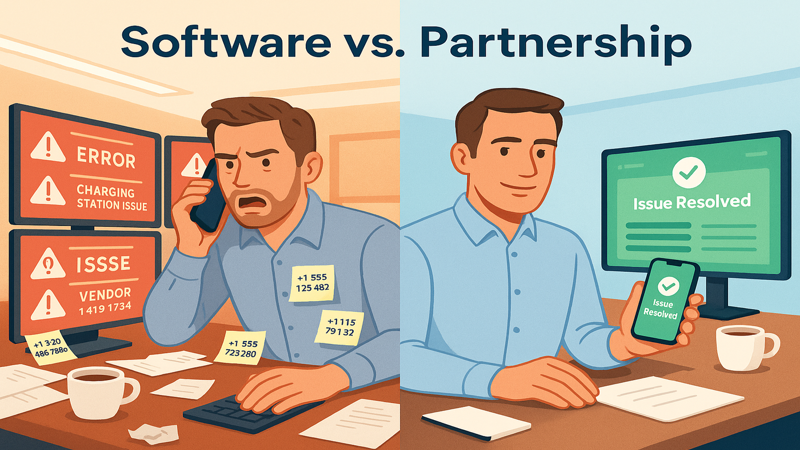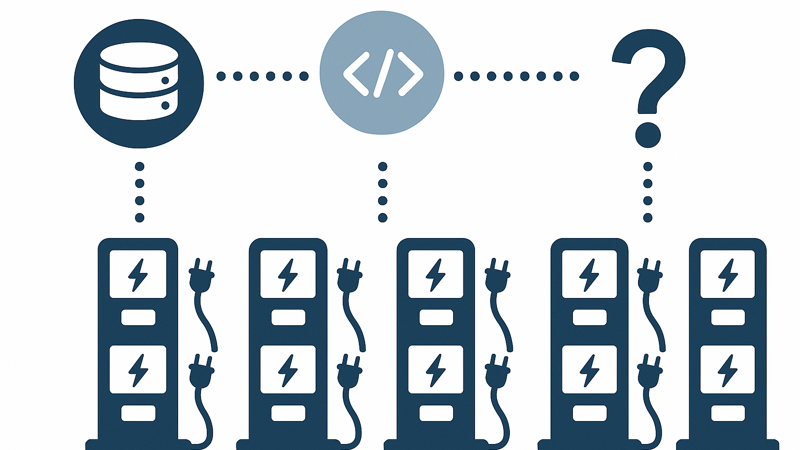
Will Software and Services Transform the EV Infrastructure?
The electric transport transition is already underway in the UK, with the government planning to ban the sale of new petrol and diesel vehicles by 2035.
Data published in Q4 2023 shows the rate of EV adoption required for us to meet our environmental targets is ahead by more than 60,000 units, with 50,000 charge points currently available in the UK.
While these figures, backed by a funding commitment of £1.6 billion, demonstrate a positive step in readying nationwide charging infrastructure for rising EV adoption, there are still several challenges that make this a mammoth task to undertake.
These include issues like range anxiety, charge point availability and reliability, and increased pressure on the electricity grid.
Granted, solving these problems won’t be simple or quick. But software provides many of the answers. We explore some of them in this article.
Scaling EV infrastructure
Scaling an EV charging network can be arduous, given that the hardware and software aren’t always designed to work together. Developing software and chargers in compliance with the Open Charge Point Protocol allows Charge Point Operators to install or remove chargers from various manufacturers across their networks, quickly and easily.
Reliability of charge points
A lack of EV charger interoperability - coupled with a constantly evolving regulatory landscape - means maintaining EV charging networks isn’t always straightforward. By using an open-source EV charger management platform, charge point operators can ensure their EV chargers comply with existing and emerging industry regulations.
With the industry constantly evolving with new updates in technologies, software allows chargers to upgrade their functionality and make improvements without having to add to or replace physical units.
And to increase the likelihood of chargers working when drivers get to the charge station, software also provides CPOs with fault alerts, ‘click to fix’ remote maintenance and diagnostics for ‘once and done’ onsite maintenance. These solutions make EV charger maintenance highly efficient, allowing engineers to run diagnostics and fix downed chargers with the touch of a button. EV charger reliability can then be guaranteed for everyone.
Grid strain
As EV adoption continues to grow in the coming years, focus must be shifted on managing the electricity strain on national grids. In fact, Motor Finance Online reports that a growing need for EV chargers could result in pressure on regional electricity grids increasing by 15-50%.
EV charging software will play an increasingly important role in ensuring electricity grids can cope with rapidly growing EV vehicle use in the coming years and decades. Software with built-in load management systems makes tracking, managing, and distributing charger electricity consumption possible. This will help reduce grid strain, preventing the likelihood of local infrastructure failure, and ultimately ensure chargers function to the best of their ability.
Managing investment costs
For commercial entities, acquiring an EV fleet is a sizeable investment. While purchasing electric vehicles will come at a high upfront cost, charging them can be costly over time. EV charging software can help EV fleet operators manage their investments by providing comprehensive reports on charging costs.
They can use this information to identify vehicles hit by higher charging tariffs on any given day, and adjust charging schedules to coincide with the introduction of cheaper off-peak energy rates. Because software is able to deliver comprehensive reports and tools to inform site profitability, minimise disruption, recoup costs, and offer better driving experiences it is also useful for Charge Point Owners.
Monetising EV chargers
The growing demand for EV chargers presents a substantial investment opportunity for potential operators. Software allows them to easily monetise chargers by setting up variable and off-peak charges for customers.
This is also useful for the many commercial and public sector organisations who are opening up their private networks to the public to maximise their chargers when not being used by employees.
Carbon footprint
Like any industry, the electric vehicle and charging sectors have a responsibility to protect the environment through their day-to-day activities.
With software solutions, EV charge point operators can easily track the carbon footprint of their chargers and ultimately meet their net-zero targets.
Range Anxiety
Whether you’re an existing or potential electric vehicle owner, a common concern you may experience is your car running out of battery and being unable to recharge it before reaching your planned destination.
This feeling is known as range anxiety, which can hinder electric vehicle adoption or deter existing owners from making longer journeys.
To counter this, software acts as a fulcrum, connecting multiple charge points networks to increase charger availability, whilst allowing drivers to search for all available charging points on their planned route and visualise them on a map.
Charge Anxiety
To increase the likelihood of chargers working when drivers get to the charge station, software also provides CPOs with fault alerts, ‘click to fix’ remote maintenance and diagnostics for ‘once and done’ onsite maintenance. These solutions make EV charger maintenance highly efficient, allowing engineers to run diagnostics and fix downed chargers with the touch of a button. EV charger reliability can then be guaranteed for everyone.
Whilst it is the responsibility of charge point owners to visibly offer 24/7 help at the point of charge, some software services have made it their forte to offer comprehensive customer service that can help immediately. They have experts who pick up the phone and remedy situations from an installer trying to get the charger up and running to drivers with challenges at the charge point station.
Payment and WiFi blindspots
One of the biggest complaints from drivers is the number of apps of cards they need to use to access different chargers. Software gives charger point owners the ability to offer contactless payment and interconnect their networks so drivers can use a single card or app for upwards of 250,000 chargers across the UK and Europe. Furthermore, some software and services companies offer to help people preload their charge cards, like the Clenergy EV card, so drivers aren’t caught out even if the WiFi signal is too weak for app, bank or fuel card, or Google and Apple Pay.
Taking advantage of lower charging costs
Whilst it is the CPOs who set the pricing tariffs on public chargers, which are subject to 20% tax, home chargers can benefit from lower nighttime tariffs for as little as 7p per KW and a 5% tax rate. Basic software functionality is free for drivers and home users, and has useful functions such as scheduling charges so you don’t need to wait up to take advantage of cheaper rates. As software services develop there are more options to subscribe to e-roaming for accessing multiple charging networks and demand flexibility services through energy suppliers so people can earn back money from the Grid.
Where next for 2024?
It’s no secret that with nearly one million EVs on the road we’re crossing over from early adopters into the very early majority. And this is seeing a necessary collective focus on resolving some of the biggest issues facing the industry in 2024. According to industry insiders, these include features such as load balancing to we support a robust infrastructure rollout that doesn’t drain the national grid and a focus on solving driver challenges through features like e-Roaming, contactless payments, and even vehicle-to-grid. The Government has played its part in ensuring a certain level of driving experience across the board with new regulations, and now the industry is responding to help deliver a better charging experience nationwide.
To read more about the status of our EV transition, and some of the issues that EV charging software helps the industry solve, click through to our News or Blogs sections where we cover similar topics such as The Opportunity for UK Charge Point Operators.
Alternatively, if you’re interested in exploring the benefits of partnering with a trusted software provider, you can submit your details to the form below for a member of our team to contact you and arrange a low-commitment demonstration of our services.


